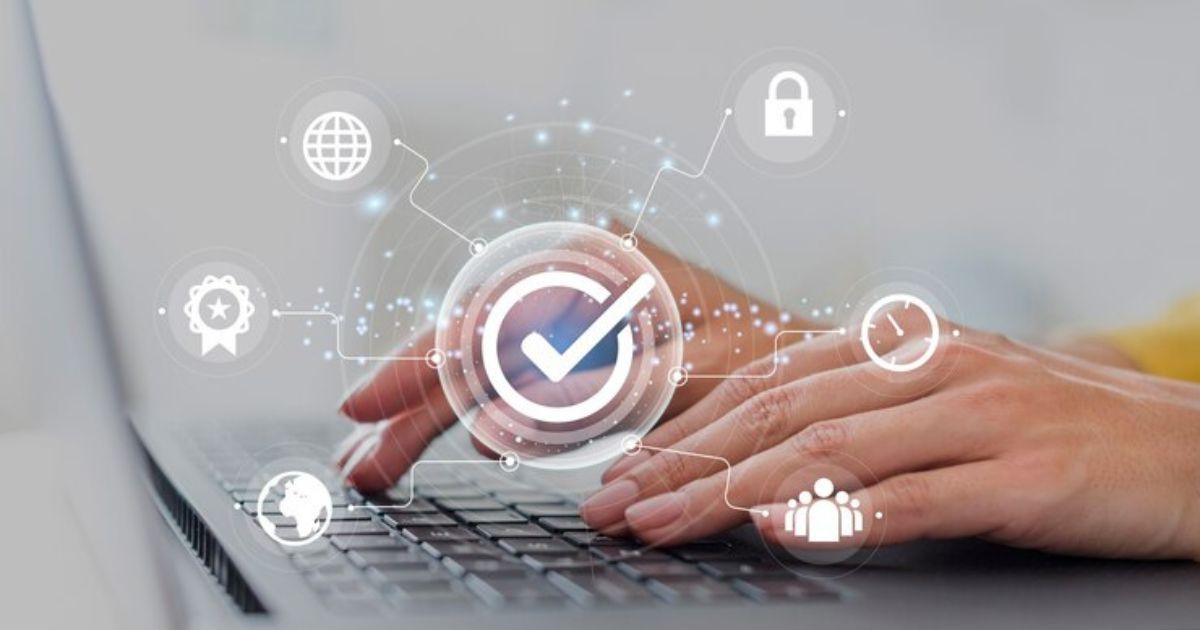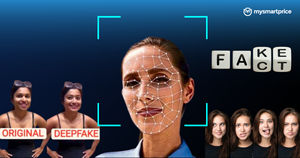
Recently, an AI generated a deepfake video of actress Rashmika Mandanna that went viral on social media. Many people, including Amitabh Bachchan and Union Minister Rajeev Chandrasekhar, have condemned this video. As a result, AI and deepfake have become buzzwords. If you have no idea about what a deepfake is, then you have landed at the right place. In this story, we will discuss what a deepfake is, how it challenges authenticity, the privacy of public figures, and how to stay safe in this AI-driven, digitally manipulated world.
What is a Deepfake?
A deepfake is a worrisome technological innovation that combines artificial intelligence (AI) and deep learning algorithms to create convincing but wholly created audio or video content.
These deceptive media inventions are intended to depict genuine people, frequently well-known public personalities or celebrities, saying or doing things they never actually did. The word “deepfake” usually refers to edited videos, although it can also refer to manipulated audio recordings, photographs, or other forms of multimedia material.
Deepfake technology analyses enormous amounts of data using neural networks and machine learning algorithms, allowing it to understand the subject’s particular facial expressions, speech patterns, and mannerisms.
With this information, the AI system can smoothly superimpose the subject’s image over a previously recorded video or audio clip, making it appear as if the individual said or did things they never said or did.
The possibility of harmful usage of deepfakes, such as disinformation, blackmail, or ruining someone’s reputation, has aroused severe concerns. As a result, there is an increasing need to develop and implement strategies for detecting and minimising the negative impact of deepfake technology.
Effects of Deepfake: A Growing Threat to Privacy and Trust
Recently, well-known actress Rashmika Mandanna experienced the distressing consequences of a deepfake as a fake video of her circulated widely on the internet. Similarly, actor Tom Hanks encountered a deepfake version of himself in a dental plan advertisement, prompting him to alert his followers about the misuse of his likeness.
Furthermore, even highly successful content creators like Jimmy Donaldson, known as Mr. Beast, have fallen victim to misleading AI-driven advertisements. A TikTok ad falsely claimed to offer $2 iPhones using a deepfake of Donaldson, putting his reputation at risk.
Beyond entertainment and impersonation, deepfake technology has been employed for fraudulent purposes, such as the case in July 2023, where a retired government employee from Kerala lost Rs 40,000 to a scam that used AI to impersonate his friend convincingly.
The fraudster not only mimicked his friend’s voice but also video-called him, replicating his colleague’s appearance to gain trust and solicit money. Additionally, a Chinese individual was duped in a Rs 5 crore deepfake scam, sending funds to an impostor posing as a friend.
These incidents highlight the potential harm that deepfakes can inflict on both celebrities and ordinary individuals.
How to Stay Safe in the Age of Deepfakes?

Knowing how to defend oneself is critical in an era when deepfake technology poses a massive risk to online security and trust. Here are some precautions you can take:
- Improve Media Literacy: In today’s digital world, high media literacy is vital. Being discerning information consumers and cultivating a critical eye can aid in identifying between genuine and distorted content. Verifying sources and cross-referencing information can help to avoid deceit.
- Update Security Measures: Keeping personal devices and online accounts secure should be a priority. Consistently updating software, utilising robust, unique passwords, and enabling two-factor authentication can go a long way in protecting sensitive data.
- Privacy Settings: It is best to evaluate and update the privacy settings on social media platforms and other internet accounts frequently. Restricting access to personal information can reduce the possibility of using it to create convincing deepfakes.
- Use Reverse Image Search: Reverse image search tools can help you determine the origin of photos and videos. This can help determine whether a media file has been improperly utilised or changed.
- Exercise Caution with Personal Data: Being cautious about sharing sensitive personal information online can reduce the risk of it being exploited for creating deceptive deepfakes. Being particularly vigilant about unsolicited requests for such data is crucial.
- Stay Informed: It is critical to stay current on the latest breakthroughs in deepfake technology and common deception strategies. Individuals who are aware of potential hazards can take proper precautions to protect themselves.
- Report Suspicious Content: If you encounter a deepfake or suspect media manipulation, reporting it to the relevant platform or authorities as soon as possible is a responsible course of action. Reporting helps to reduce the spread of false content.














